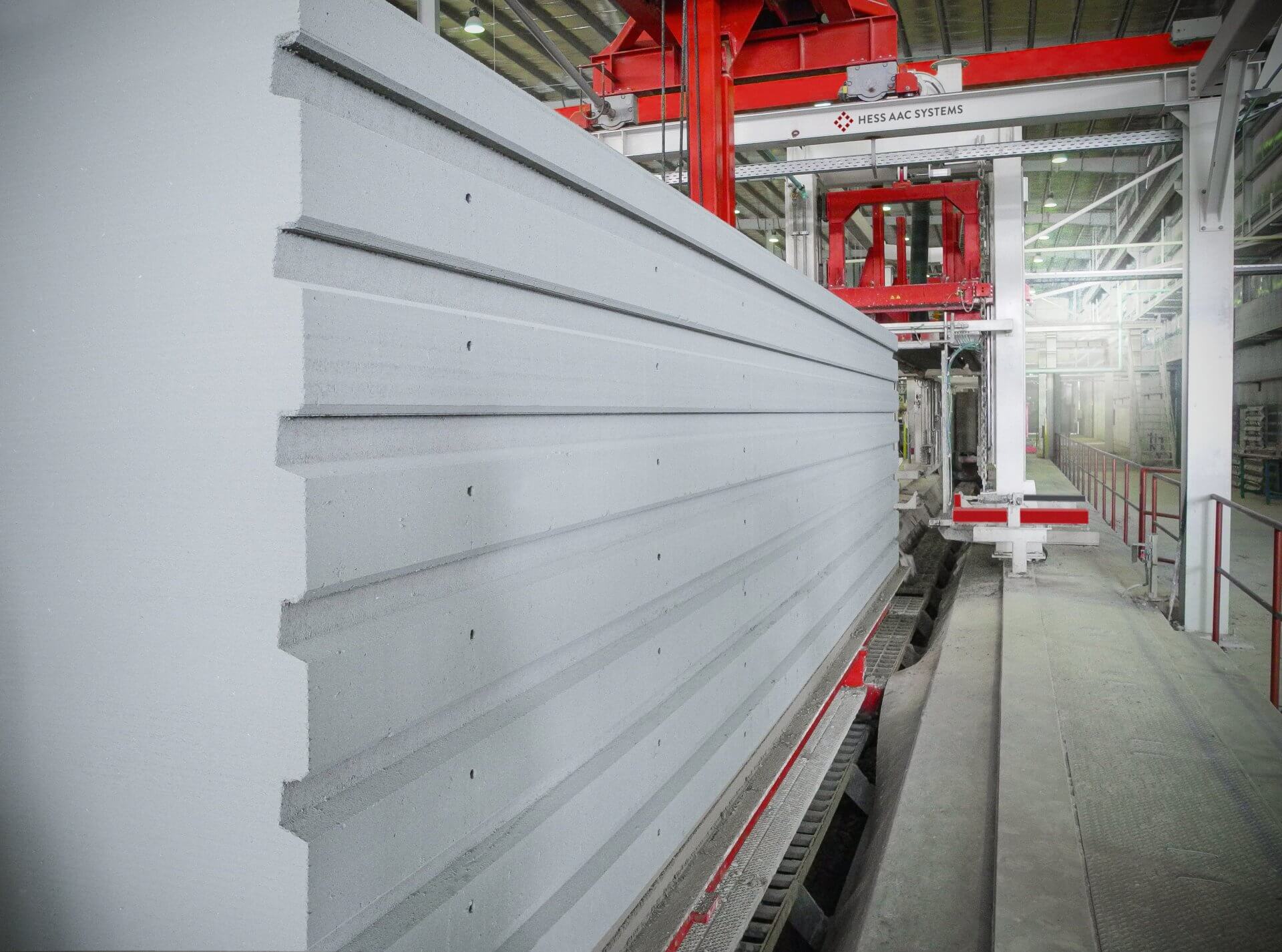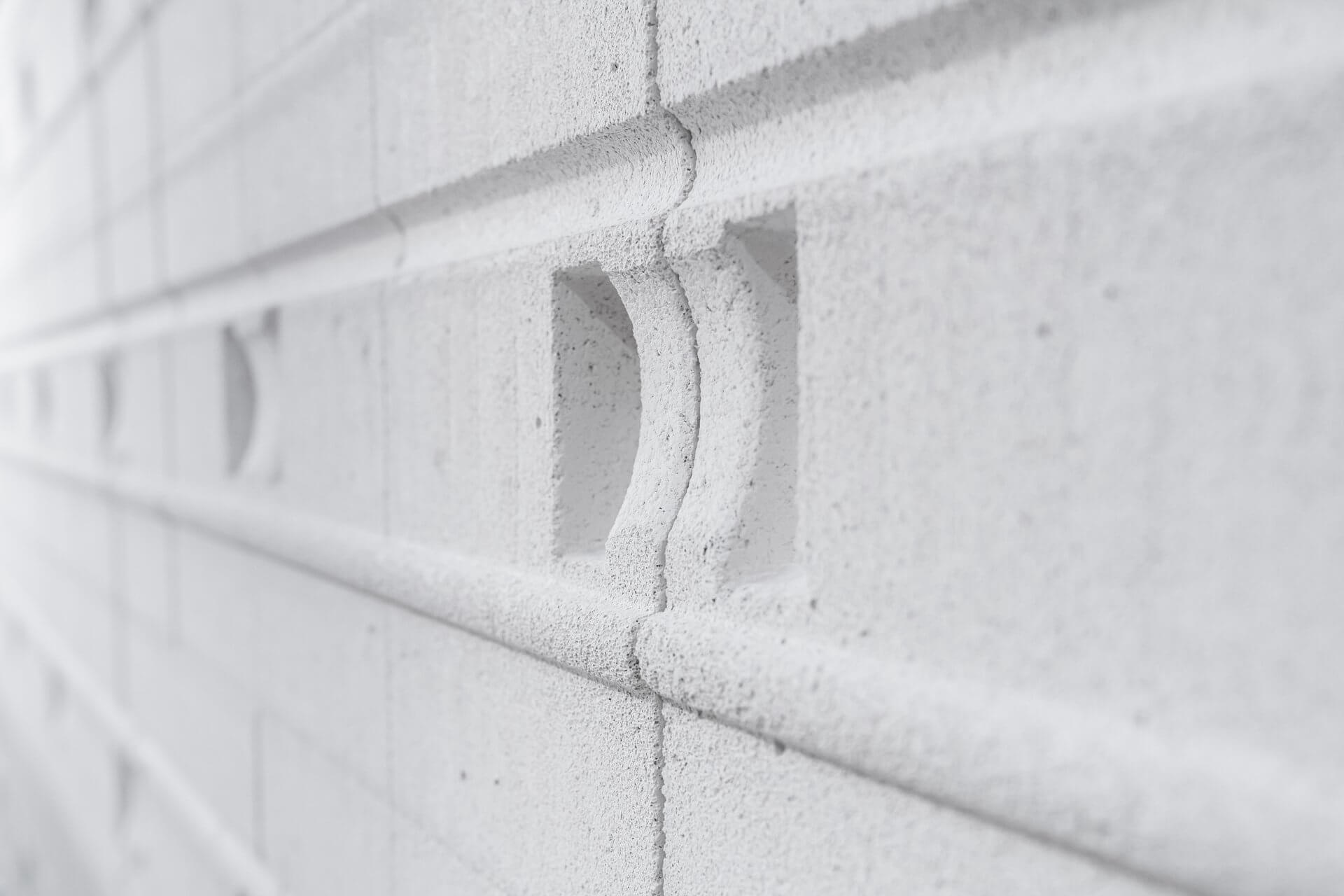What is aerated concrete?
Aerated concrete was developed in Sweden in 1924. In Europe, aerated concrete has since become one of the most widely used building materials, and it is also used more and more often in many other countries. Aerated concrete as a light-weight, firm, highly insulating and durable construction material is produced in many densities and strength classes.
Aerated concrete offers a wide range of possibilities to increase the building quality while reducing the costs on the building site. Aerated concrete is produced from a mixture of quartz sand and/or fly ash (PFA), lime, cement, gypsum/anhydrite, water and aluminum and is cured by steam curing in autoclaves. Because of its outstanding properties, aerated concrete is used in many construction projects, such as residential, commercial and industrial buildings, schools, hospitals, hotels and other structures.
Aircrete is an air-entrained concrete which consists of up 85% volume percent of air. The solid matter is a crystalline bonding agent called tobermorite. In its chemical composition, tobermorit contains silicon dioxide, calcium oxide and water. In addition to the binder phase tobermorite, aerated concrete contains quartz grains and small amounts of other minerals. The silicon dioxide is obtained from quartz sand, fly ash (PFA) or cracked quartzite. Silicon dioxide can also be obtained as a by-product of other processes, e.g. foundry sand. Calcium oxide is obtained from quicklime, hydrated lime and cement. Small quantities of gypsum/anhydrite are added as a catalyst and to optimize the properties of the aerated concrete. Aluminum powder/paste is used as an expanding agent. In specific applications, additional (chemical) components can be added to improve the properties of the aerated concrete during production and in the final product. Special active ingredients enable the use of certain waste materials as valuable new raw materials for the production of high-quality aerated concrete, which supports sustainability and the process cycle.
Advantages of aerated concrete
- wide range of dimensions: Aerated concrete products can be manufactured in many different sizes, from standard blocks to large reinforced slabs
- excellent heat insulation: Aerated concrete has an extremely low thermal conductivity, resulting in a high degree of thermal efficiency. This means considerable savings potential in heating and cooling costs
- extremely light: Aerated concrete weighs about 50% less than comparable building materials
- high compression strength: Aerated concrete is a solid product and therefore extremely resilient. The entire surface is included in the calculation of structural analysis
- high dimensional accuracy: Due to its dimensional accuracy, aerated concrete is extremely easy to process, as no thick mortar is required
- high noise insulation: High noise insulation thanks to the porous structure of aerated concrete
- high fire resistance: Aerated concrete has an extremely high fire resistance of at least 4 hours and more
- termite-resistant: Termites or other insects cannot damage aerated concrete
- easy to handle: Thanks to the excellent size/weight ratio, building with cellular concrete proceeds very fast






